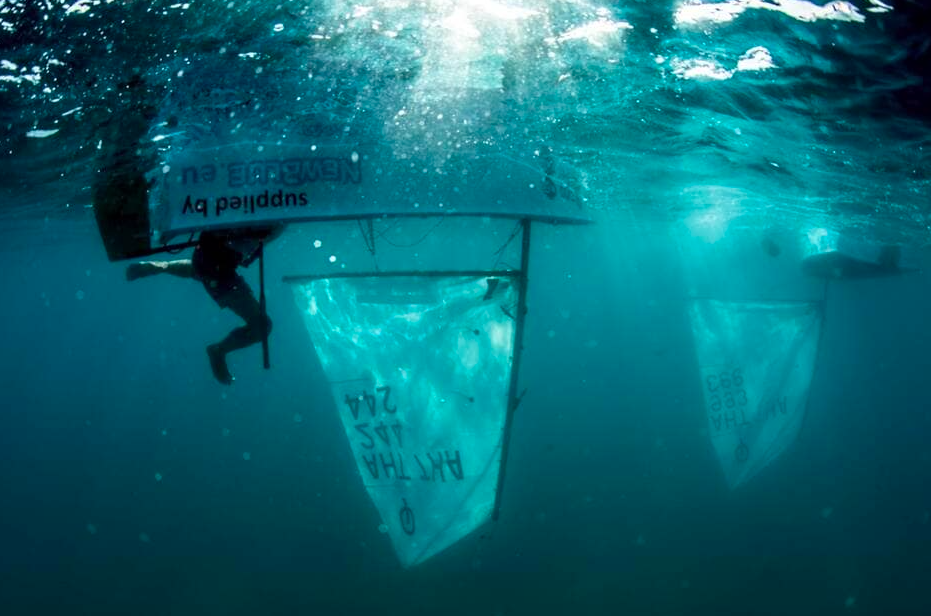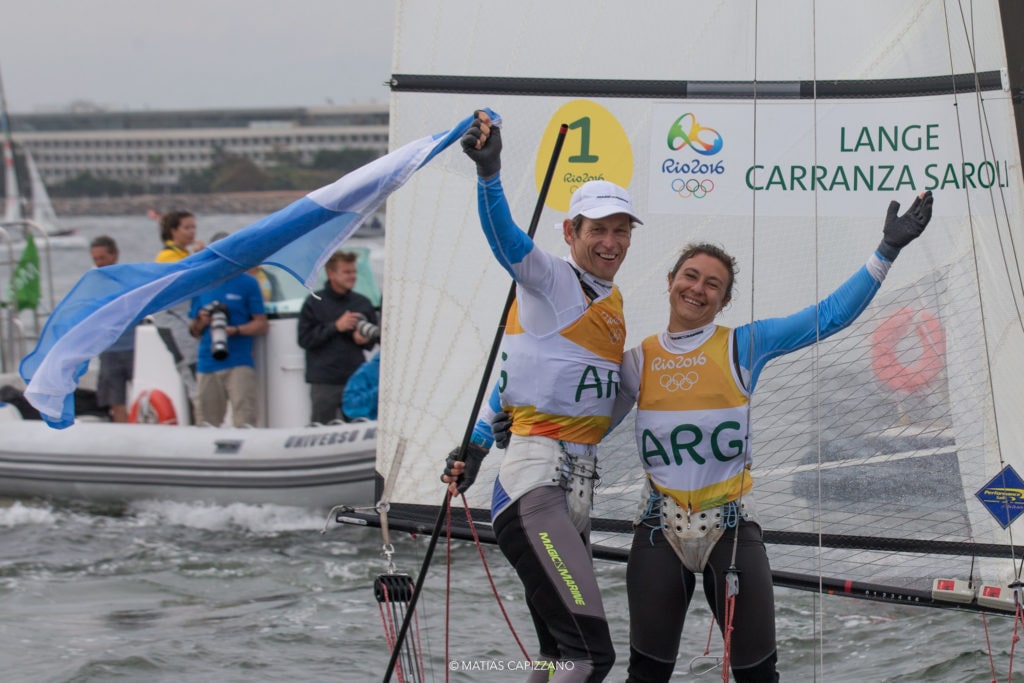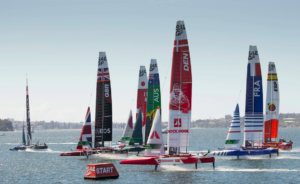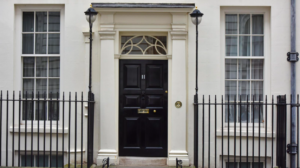Incredible images from Matias Capizzano’s 20 year career

Argentinian based photographer, Matias Capizzano, is celebrating 20 years in business – taking marine photographs. Coming at the end of a difficult year in which eight major events (including the Tokyo Olympics) which Capizzano was capturing were cancelled, he’s used his 20th year to develop his skills into making personalised print books for his clients.
His clients are mainly event organisers and sailors, as well as the main stay industry names like Optiparts, North Sails, Olimpic Sails and J Sail and many more. They use him time after time as he’s not afraid of a challenge.

“I used to go alone in a small rib driving and taking the photos,” Capizzano says. “I crossed very slowly in front of this S40 sailboat to get this view. It’s stressful to time the cross and be able to take photos before it comes close to me.” He says he’s thinking: “Engine please don’t stop, don’t stop now.
“Sailing is a complex sport, and it’s important to understand it to get the best out of it in your photos,” Capizzano says.

“You have to be prepared to protect your equipment and yourself from the environment, especially the stormy days when you can get the best photos. Waves and salt water are not friendly with cameras and lenses so you have to take care of them. Everything is in motion, the sailboat and your rib because of the wind, waves and current so if you want a special angle to take the photos at a specific moment it’s a challenge and you have to take these natural phenomena into account.
“Your senses are full time connected with the environment.
“You have to be confident with the organisers to show them that you know the game and they allow you to be close enough to do your job or swim next to a buoy.
“The daily working hours are long and physically tiring with maybe four to six hours in the water, and then back at the office a long night editing and delivering photos.
“I have been at two Olympic Games and it’s really a challenge when you have a boat driver and share the press boat with four or five other photographers. Once at the Galápagos Islands, the rib capsized and I saw the light at the end of the tunnel.”

Capizzano says you need to be restless to get the best images.
“Sometimes I jump in the water to have a different point of view. You have to be very restless in this job, patient but restless, all time looking for something special.”

“In most of my photos you can see a low point of view, near the sea level,” Capizzano says. “To have this view I need to use a very small dinghy without a centre console. It’s like riding a horse. On windy days, when the waves become big, the photos end up being painful in my body.”

“The most physically difficult photos are when I jump into the water and dive to do some underwater ones.”
His profession is clearly a passion as is sailing.
“Since I was young I loved photography and used to play with an old camera at home,” Capizzano says, “and I started sailing at the age of seven in the Optimist class In Mar del Plata, my home town in Argentina, famous for its nice and, sometimes, extreme sailing conditions.”

“An Optimist does not usually to jump like this,” Capizzano says. This image went on to represent his work around the world for many years.
Optimists formed his love and sailing, and he likes to capture that in others too.

“I love to show what´s happening there, outside in the middle of the ocean when young sailors are alone in their boats, challenging against nature and themselves,” he says.
Capizzano’s hoping to photograph the Antarctic in the future, but for now he says he aims to continue with what he’s doing.
“It’s an incredible job. It’s gratifying in many ways but tiring. My friends think that I am a tourist. I try to explain to them how hard it is.”

“You can’t imagine how difficult it was to be able to take these photos with so many press boats around blocking your way or view,” Capizzano says. “It was a chaos and, at the same time, an incredible emotion, difficult to describe.”
Cecilia Carranza and Santiago Lange won the gold medal for Argentina. Lange had been recovered from illness a year before, and Capizzano says the medal ceremony was “one of the most emotional moments that I lived as a photographer. It was hard to se throw the camera viewfinder with my eye full of tears.”










